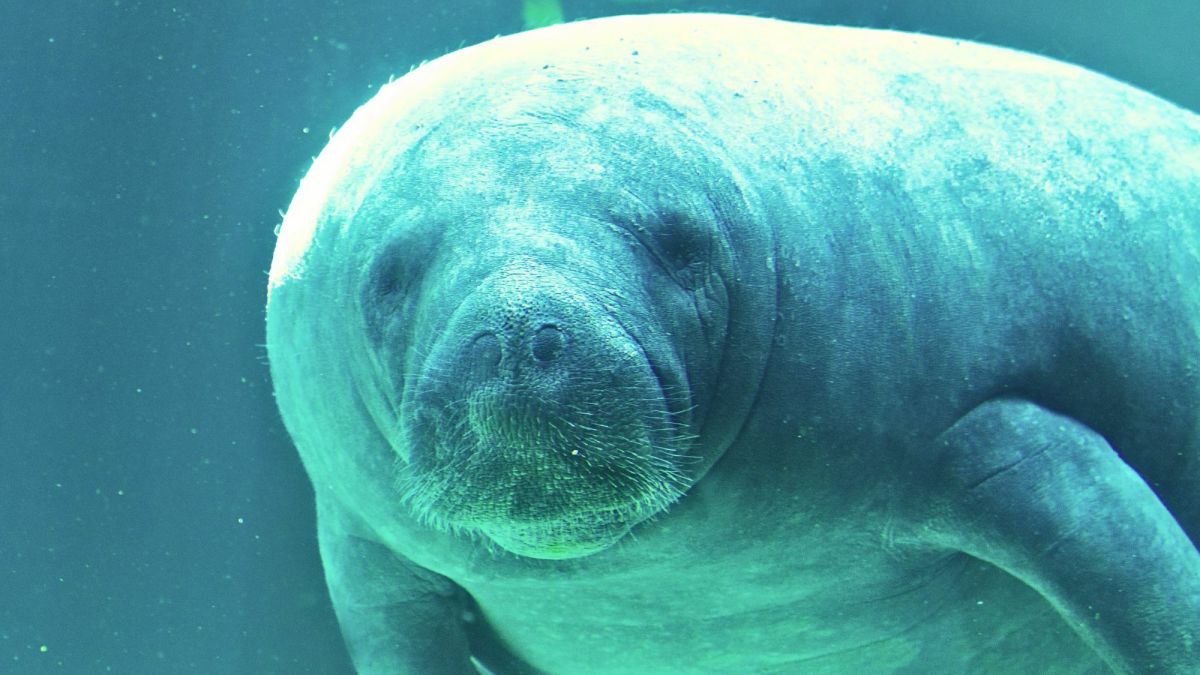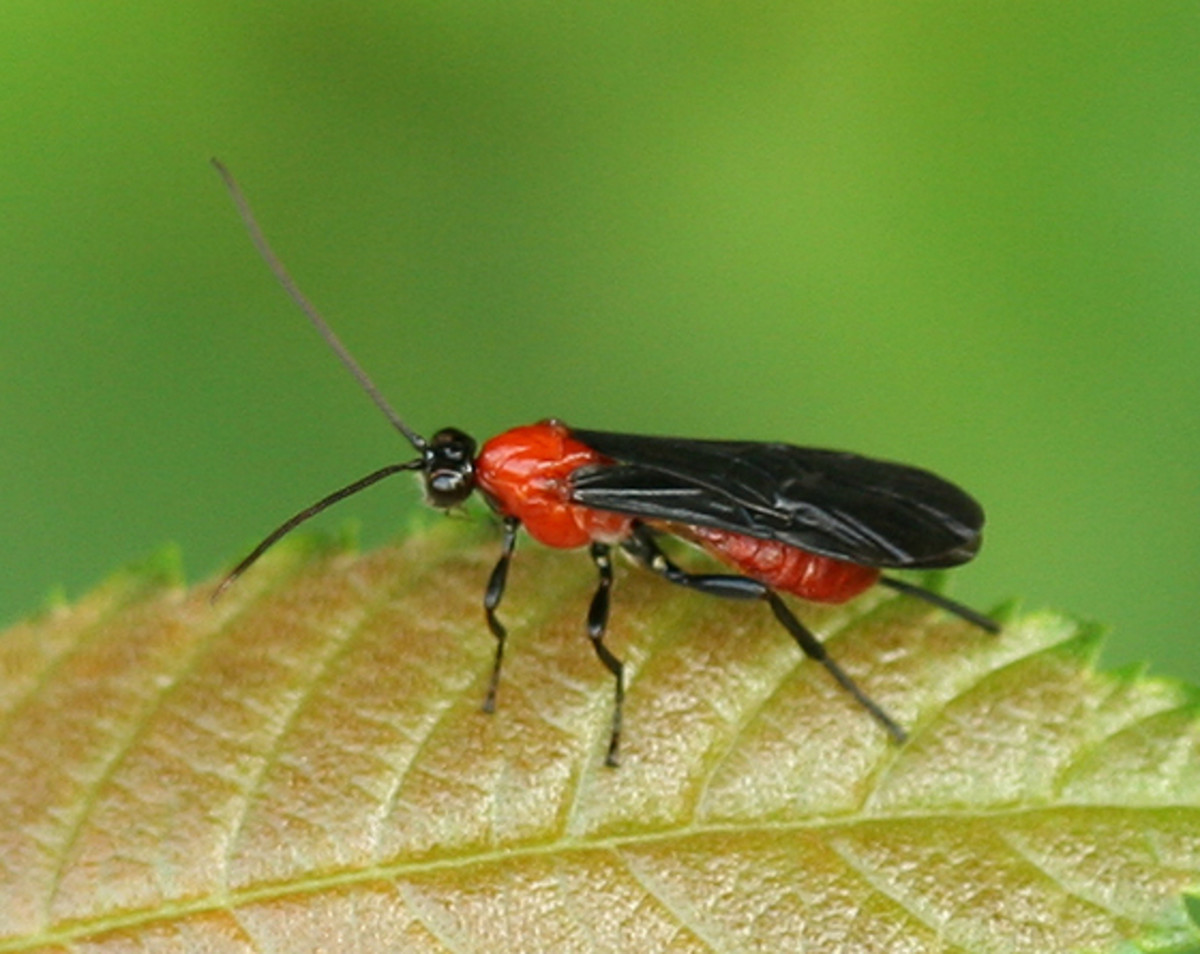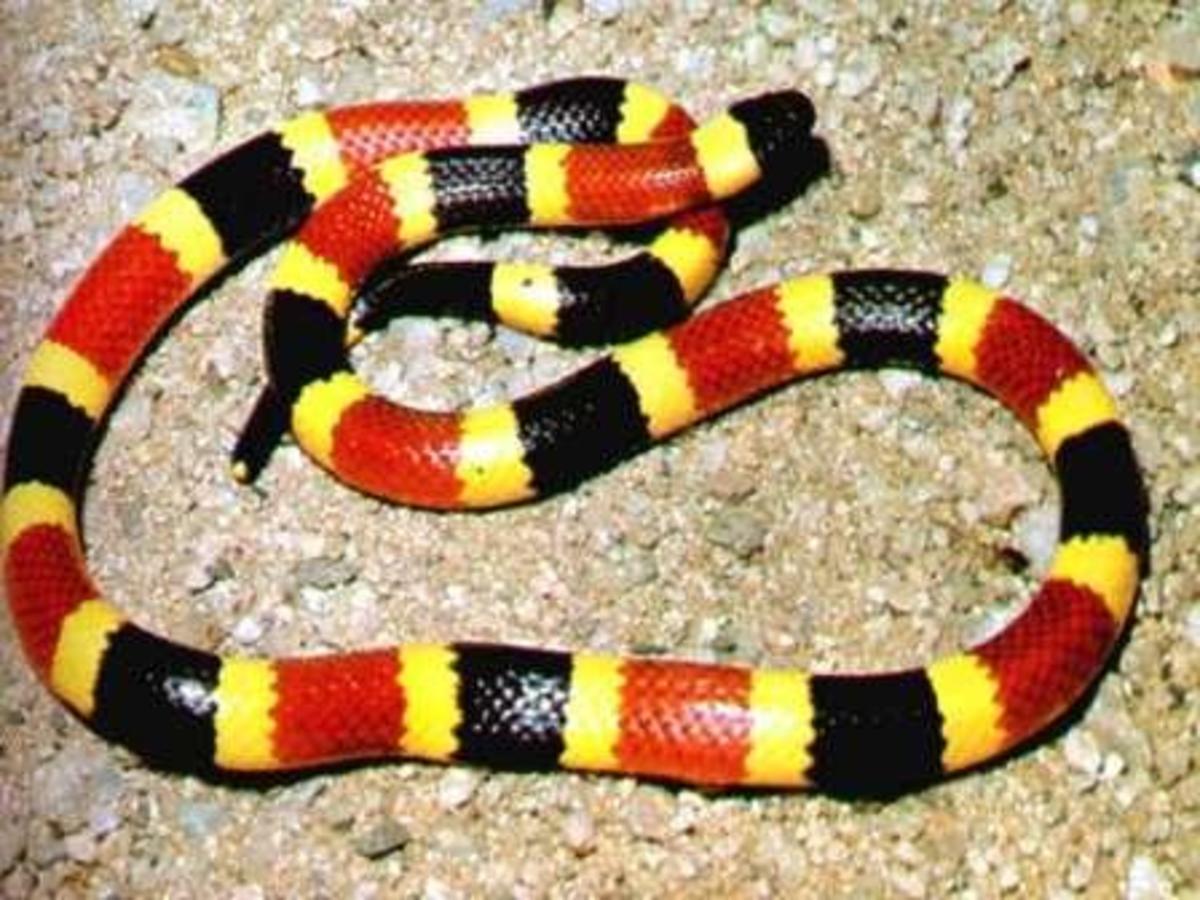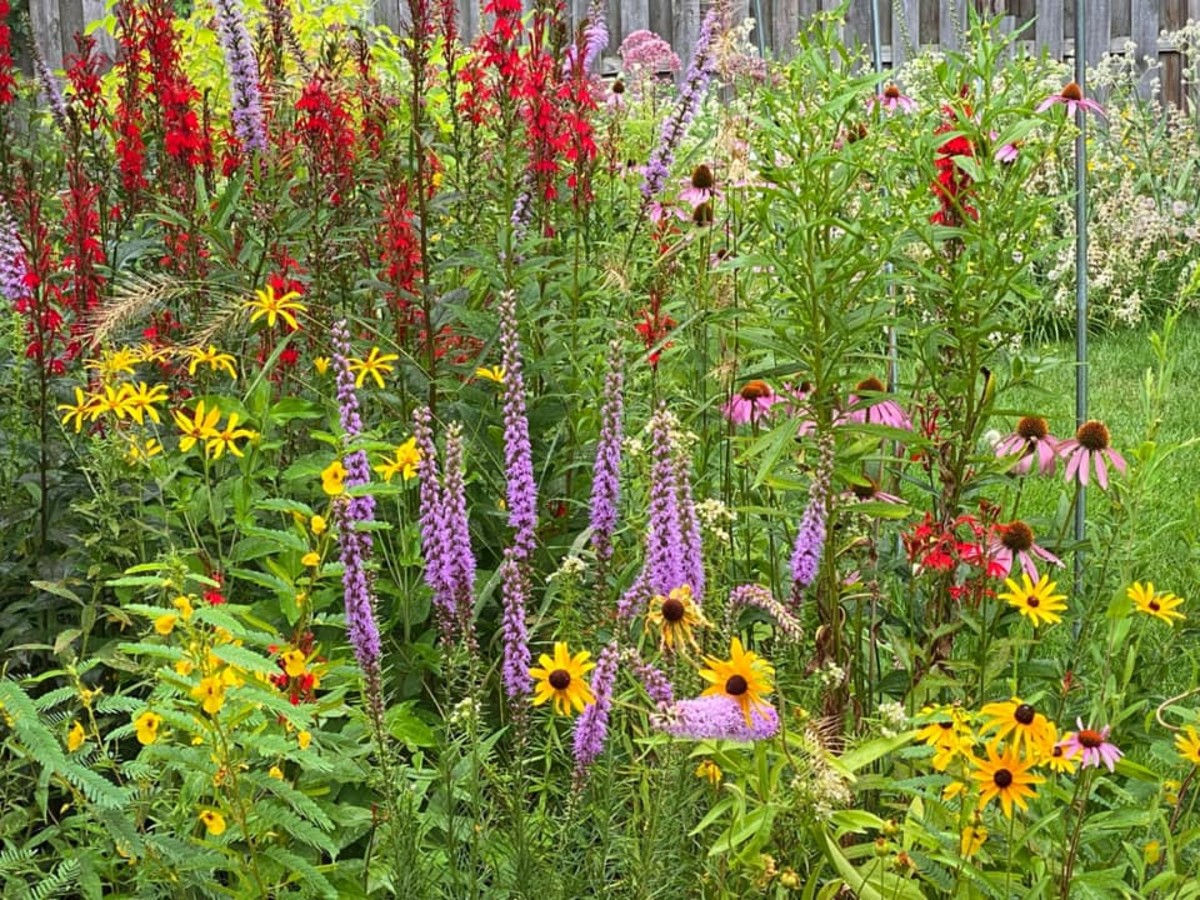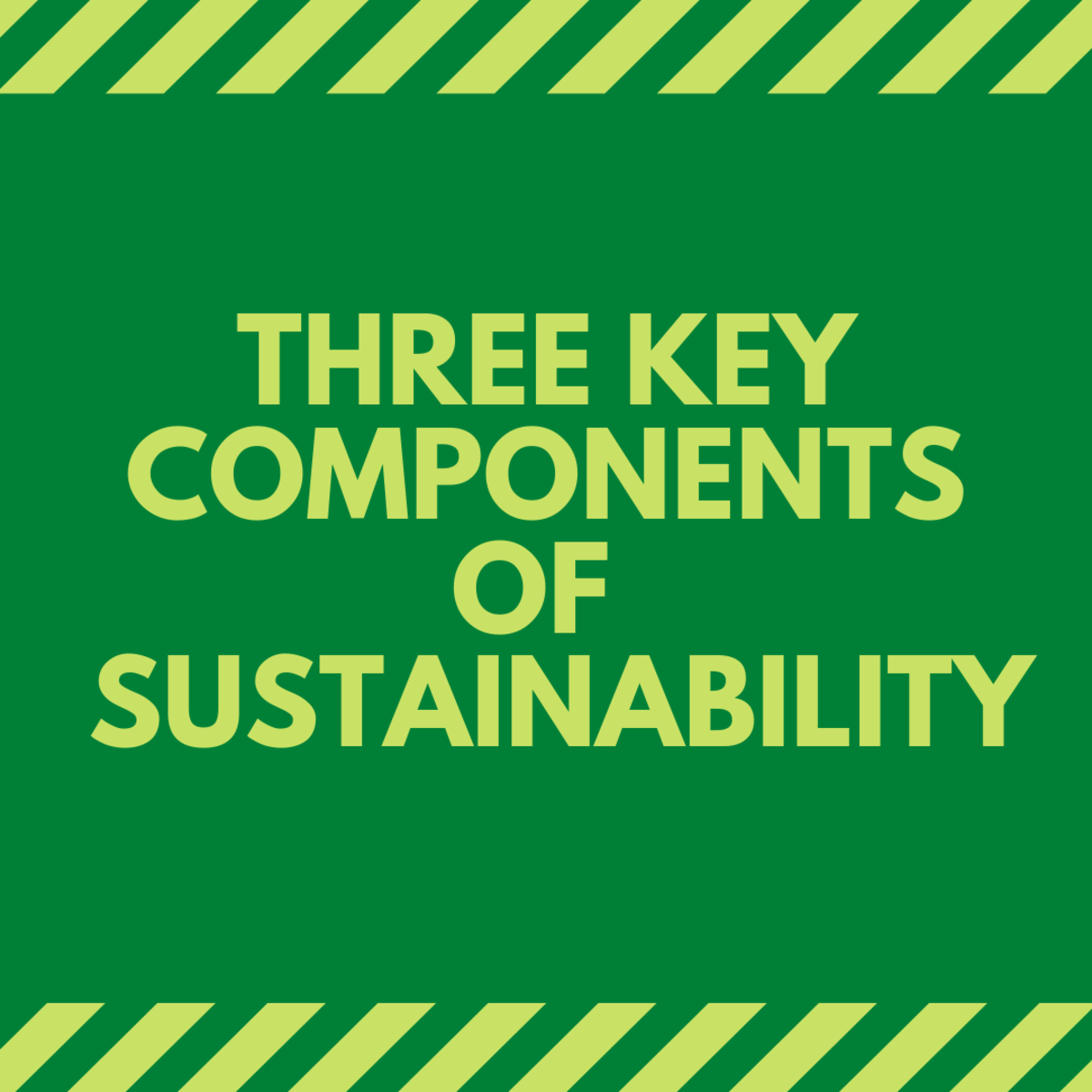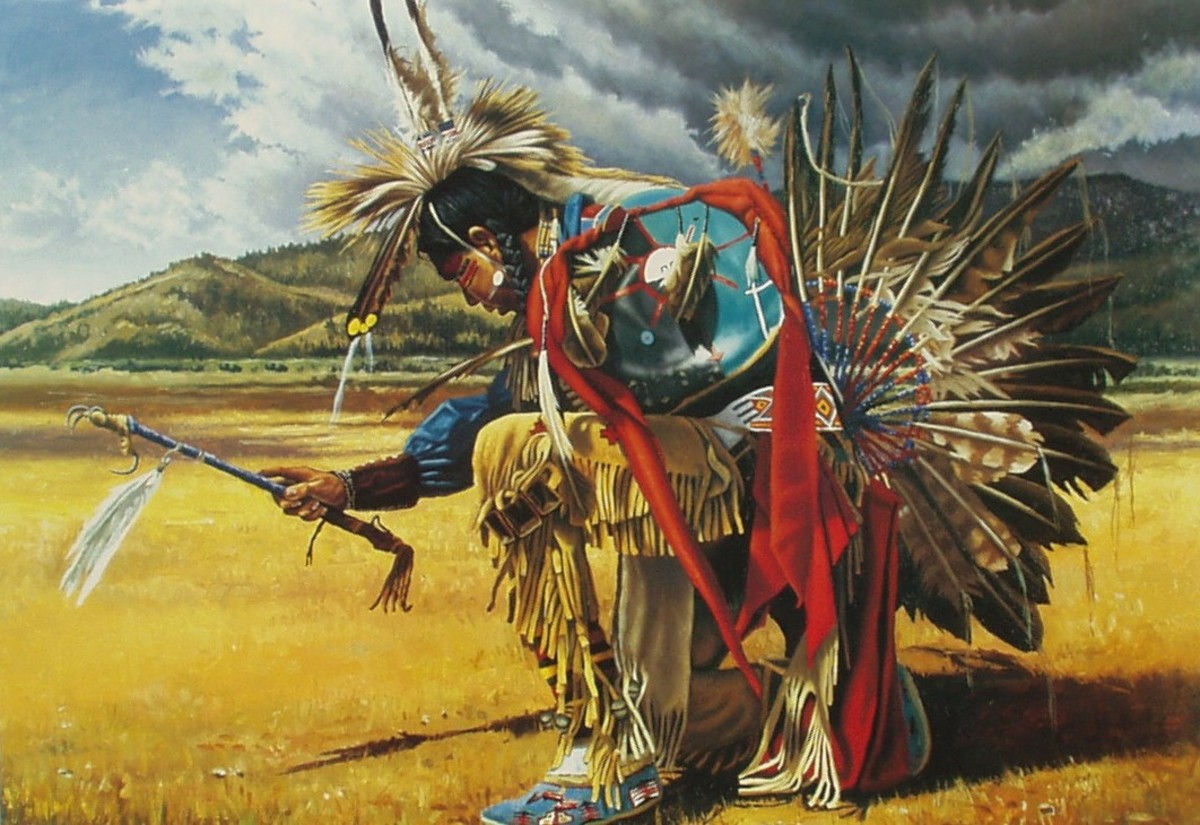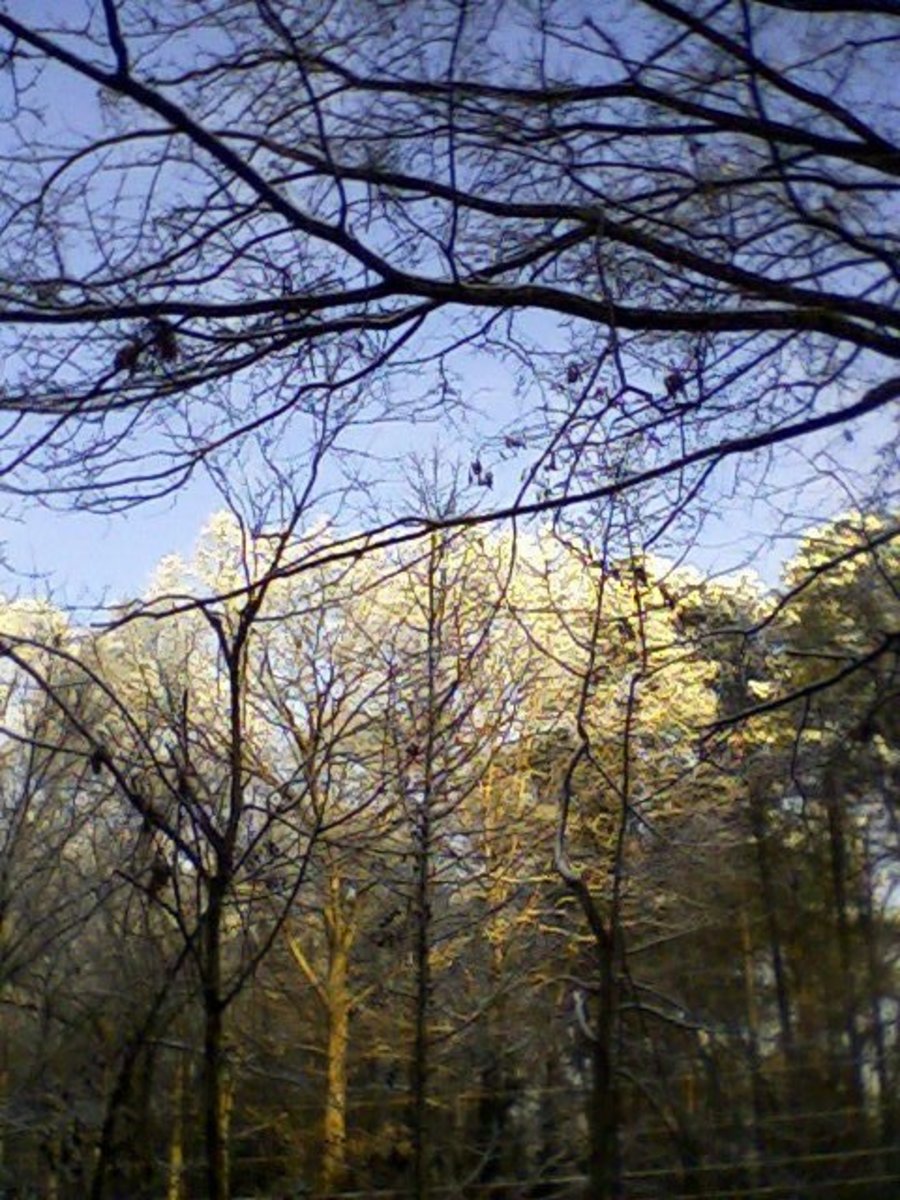Sustainable Gardening a la Rabbit Hill
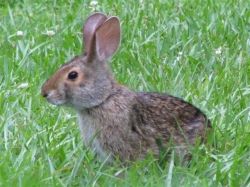
Organic Sustainable Gardening Guide
When Robert Lawson wrote and illustrated Rabbit Hill over 60 years ago he was ahead of his time in the way he felt about sharing his part of this earth with the indigenous animals. For years, we have been using many of the gardening "techniques" that he wrote about in this wonderful children's book in our sustainable garden.
This page is about those beneficial creatures from the book that should be welcomed into the garden. Some will help control pests, some will help pollinate and some will just lift your spirits and help you open your heart to the beauty of nature. We have also provided some basic information on sustainable and organic gardening to help you get started on your own sustainable and/or organic garden.
Many of the photos seen here can be purchased in Lalagniappe's Zazzle Shop as print-on-demand products such as posters, cards, apparel, mugs, etc.
St. Francis Among Pansies Print
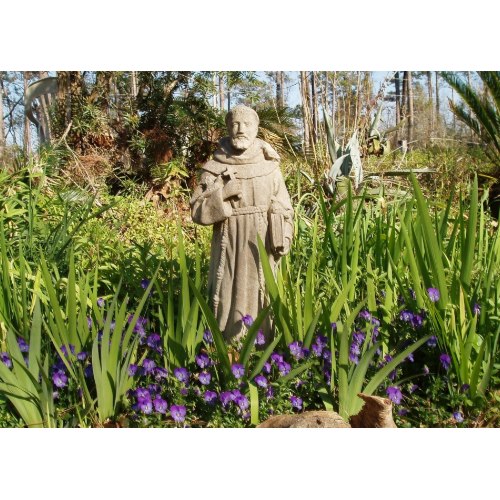
Gardening Lessons Learned
As an adult, when I read this book aloud to my class of first graders in the 1980s, I marveled at the wonderful lessons about the environment and the respect for all living creatures that were reflected in the pages of this little book. My husband and I have always felt that we were the intruders, not the wild creatures. We have always tried to do no harm, either to the environment or the animals and native plants. We have also feeel that, like Robert Lawson says in Rabbit Hill, "There is enough for all" and yes, a statue of St. Francis of Assisi, the Patron Saint of Animals, has been in a prominent spot in the garden for many years.
Cottontail
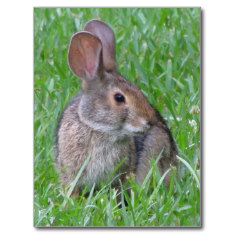
Rabbit Hill

Skunk
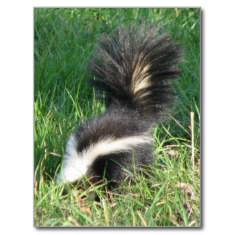
Raccoon Pair
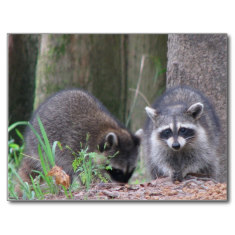
Fawn Peeking
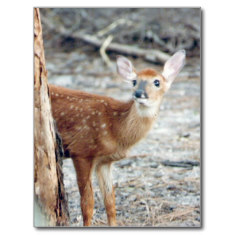
There is Enough for All
The animal characters in the book are many of the same mammals that we have on our, Hummingbird Hill. Some of these animals (rabbits, deer, field mice, raccoons) will munch on an occasional vegetable or tender sprout at our place, but we have found that a little fencing and a balance of natural predators keeps these populations under control. Also planting native food plants in areas away from our yard so that they will not need to come here in search of food has been successful in keeping everything balanced.
Biodiversity among predators is extremely important so we should not pick and choose the one that will be allowed to survive. Each predator eats a different set of prey at a different time of the day. For instance Flycatchers, Swallows and Swifts eat flying insects by day, while Bats devour thousands of mosquitoes and other bugs each night. Hawks and Kites keep the rodent and insect population down during the day and Owls and Night Hawks do the same after dark.
Great Crested Flycatcher
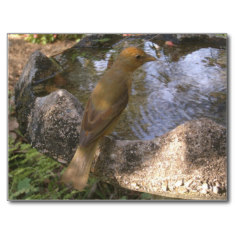
Red Shouldered Hawk
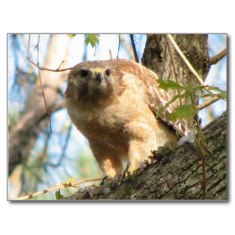
There are many wild creatures that we welcome into our garden because they devour thousands of harmful insects and larvae organically. Pesticides indiscriminately kill good insects along with the bad, while polluting the earth and water. Electric bug zappers are no better. They advertise that they control mosquitoes, but in reality they kill only flying insects (mostly pollinators) that are attracted to the light. Mosquitoes are attracted to the carbon dioxide that is exhaled by mammals, so they do not go near a Bug Zapper. Bats, Dragonflies, Swifts and the many other natural predators are much more efficient and less costly mosquito eradicators.
Screech Owl
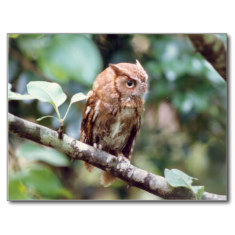
Pest and Disease Problem Solver

Moles in the Garden are a Good Thing
One of the fantastic earthly insectovores from Rabbit Hill that comes to mind is Little Willie the field mouse's friend, Mole. In the story, when Uncle Analdas, the grouchy old rabbit, worried about the cutworms eating the garden, Mole proclaimed, "We'll patrol, me and my brothers, night and day, turn and turn about." That's what moles do when they tunnel through the soil. They are searching for cutworms, grubs and other insect larvae. We don't worry about the mole tunnels in our yard because we know that the Eastern Moles are hard at work protecting our root crops and other plants from attack from below. We do just what the Man told Tim McGrath (when he was irate about the mole ridges in the lawn), we just roll or tamp them down. Years ago we stopped exhibiting the insane fixation on exotic turf lawns, that is so rampant in the U.S. We would rather have flowering and/or fruiting trees, shrubs, vines and perennials instead and Moles and Shrews, along with some other wonderful little creatures enable us to successfully grow these plants without the use of pesticides.
Eastern Mole
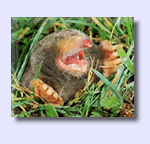
The Eastern Mole (Scalopus aquaticus), which is the most common one in our area, lives a solitary life, except during the spring mating season. In fact, when moles encounter each other during other times of the year, it usually results in the death of one. Earthworms and white grubs are their basic foods, and are supplemented by other insect larvae, pupae and adults occurring in the soil. Spiders and centipedes are also eaten occasionally. Eastern Moles have 2 sets on tunnels. The shallow, temporary feeding tunnels that we see in our lawns and meadows and the deeper (about 18 inches) elaborate, permanent maze. The deep maze provides many functions which are beneficial to both the mole and to the earth. These deep tunnels provide aeration for tree roots and drainage for rainwater which is superior to any that humans could build. Generation after generation of moles use the tunnels to build dens for their spring litters, to keep cool in the summer and warm in the winter and to travel between feeding areas. Each mole's territory usually covers about 2 acres. Mole tunnels are also used like underground highways by other small mammals, like the Shrew.
Texas Bug Book

Helpful Little Shrews
Shrews are the world's smallest mammal and serve as an important link in the food chain. Their diet consists primarily of insects and other invertebrates, but plant materials often are a small part of their diet. Their principal animal foods are earthworms and the larval and adult stages of various insects including beetles, caterpillars, ants and flies. Snails, spiders, grasshoppers and mice are also eaten. Predators of shrews include owls, hawks and snakes.
In our part of the country, there are three types of Shrews; the Southern Short-tailed (Blarina carolinensis), the Least (Cryptotis parva) and the Southeastern Shrew (Sorex longirostris). Shrews capture insects as they crawl along the ground. The Short-tailed Shrew has venomous saliva, a trait that is very unusual among North American mammals. Short-tailed Shrews live but a year, but in that year consume twenty-five pounds of insects and give birth to thirty offspring. Quite a bang for the buck, I would say.
St. Francis and Green Anole
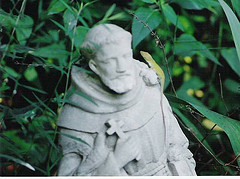
If you have men who will exclude any of God's creatures from the shelter of compassion and pity, you will have men who will deal likewise with their fellow men.
St. Francis of Assisi
The Most Misunderstood Animals
Other creatures that are beneficial to the garden, in particular, and the environment, in general, include many animals that are mistreated and misunderstood.
Bats consume thousands of mosquitoes and other flying insects each night. They are our only winged mammal. Bats are also important pollinators of many types of fruits. In fact, the Agave plant, from which Tequila is made, and the Saguaro cactus are both pollinated solely by bats.
Anole on Goldenrod
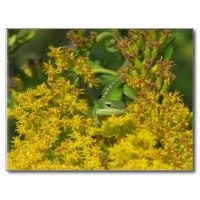
Lizards, like the Green Anole (Anolis carolinensis), eat a multitude of insects. My Mother used to say that lots of lizards were the sign of a healthy garden. Green Anoles are about 5-8 inches long. They are usually green but can become mottled or solid brown. The males have pinkish red throats that they can fan out to display their prowess. They live in trees, shrubs, vines, and on walls and fences.
Ribbon Snakes
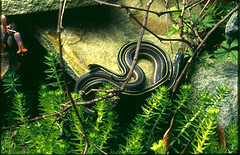
Snakes are very efficient predators that keep rodents and insects under control. Most are non-poisonous like the Kingsnake, Garter Snake and the tiny Ring-neck Snake and should be welcomed into the garden with open arms.
Bronze Frog in Prayer Plant
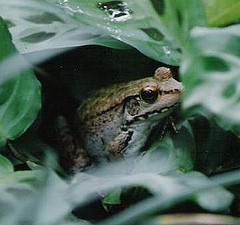
Toads and Frogs are the Gardeners friend. These amphibians devour countless numbers of insects each night. Toads have thicker skin so they can survive in drier conditions than frogs. Toads hunt on land at night. During the day, they stay cool by burrowing into the soil or under a rock. You can use broken clay flower pots as "toad houses" by placing them under shrubs in the shade. Toad eggs are laid in a long string, like a necklace, in the water. Frog eggs are also laid in the water, but in a clump.
Golden Orb Spiders
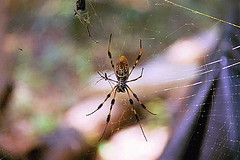
Spiders are another of the gardener's friend. Most are non-poisonous and some are quite beautiful. They spin their webs to capture flying insects each night. When an insect hits the web, they quickly capture it and secure it with more silk, to be eaten later. The Golden Orb Spider and the Banana Spider are beautiful, non-poisonous members of the arachnid family that spin golden webs.
Coreopsis
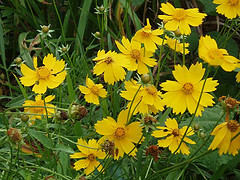
Let us not forget the millions of tiny microbes and bacteria that break down the soil and aid in fertilization. When you use herbicides and pesticides, many of these tiny organisms are destroyed and before you know it, your soil becomes depleted because they are no longer there to do their jobs. Many native plants and old fashioned flowers will attract predator insects (as well as butterflies, birds and hummingbirds) to the garden so that pesticides are not needed.
Ring-necked Snake
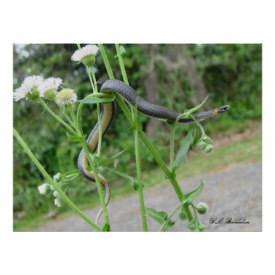
Garden Snake by Muriel L. Sonne
I saw a snake and ran away . . .
Some snakes are dangerous, they say;
But mother says that kind is good,
And eats up insects for his food.
So when he wiggles in the grass
I'll stand aside and watch him pass,
And tell myself, "There's no mistake,
It's just a harmless garden snake!"
Manatee, Otters and Bats, Oh My! video
We need another and a wiser and perhaps a more mystical concept of animals... In a world older and more complete than ours they move finished and complete, gifted with extensions of the senses we have lost or never attained, living by voices we shall never hear. They are not brethren, they are not underlings; they are other nations, caught with ourselves in the net of life and time, fellow prisoners of the splendour and travail of the earth.
— Henry BestonFavorite Small Predators
Which is your favorite predator in the garden?
Skunk Stickers
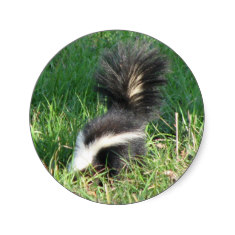
Many of the photos seen here can be purchased in Naturegirl7's Zazzle Shop as print-on-demand products such as posters, cards, apparel, mugs, etc.
Sustainable Garden Basics
One of the hot topics and new buzz words in gardening is Sustainable Gardening. Basically, sustainable gardening is to garden with sensitivity toward the environment and in harmony with nature. A sustainable garden will thrive naturally for years without excessive watering, cutting, pruning, fertilizing or using petrochemicals for pests. Sustainable gardening practices include composting, mulching, adopting smart watering practices and using natural means of pest control.
Most sustainable gardens are organic gardens, that is, gardens that grow food without the use of petrochemical pesticides, herbicides and non-organic fertilizers. An organic garden relies on the use of beneficial insects, diversity of plants, and the use of compost to supply the soil with nutrients.
Southern Crabapple
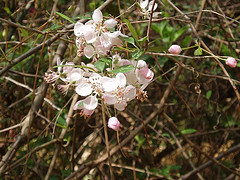
1. Use Native Plants & Trees
Using native plants and trees is another beneficial practice of a sustainable garden. Planting natives is one of the best ways to work with, rather than against, nature. By using plant species that grow locally in your area, you will have plants and trees that require less of your time and energy and that will be healthier than exotic species that you buy at the big chains. Another benefit is that native birds, insects and other wildlife have evolved with these native plant species and are able to use the fruits, nuts, seeds, nectar and habitat these plants and trees provide.
Red Mulberry
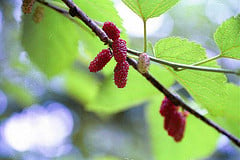
Jewel Weed
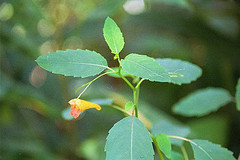
Wild Bergamot
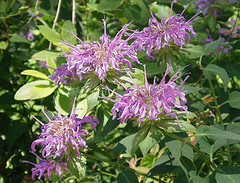
Crabapple and Red Mulberry are fruit bearing trees that provide edible fruit for humans and animals. Jewelweed attracts Hummingbirds and the leaves are used in soaps as a remedy for poison ivy. Wild Bergamot (Monarda fistulosa) also attracts hummingbirds and butterflies and can be used to make delicious teas. Remember the Boston Tea Party? The colonists used plants in the Monarda family to make tea after their British supply was exhausted.
2. Make a Compost Pile
Starting a compost pile will also benefit a sustainable garden. Good compost improves the health of both the plants and the soil. Worm composting is another easy way to have a supply of pure organic plant food available at all times. All you need to start is a shallow bin, that allows air to circulate, bedding and worms. The castings that worms produce are a great fertilizer for plants and worm composting is an excellent way to keep food waste out of the garbage.
How to Make a Compost Pile part 1 Vid
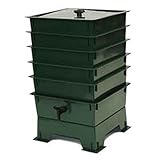
How to make a Compost Pile part 2 Vid
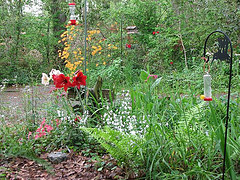
Our Rain Garden
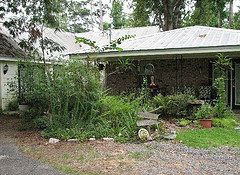
3. Conserve Water On-site
Drip Irrigation, Rain Gardens and the collection of rain water in rain barrels are excellent ways to use existing resources to benefit the garden and the environment. Drip irrigation uses hoses with tiny holes in them so that there is a slow application of water. The plastic pipe or hose is laid along each row of plants, so soil moisture remains constant and air is always available. Since the water is delivered directly to plants, little is lost to evaporation or runoff making this technique very efficient and a good way to conserve water. Drip hoses can be purchased at any garden supply store.
Rain Gardens are specially constructed gardens that hold water for a day or so, giving it time to soak in. A swale is dug out and sometimes French drains are used to reroute rain and storm water to the beds and gardens where it is needed. The following photos show two sides of our rain garden, which drains the water that pours from the house to the patio and into the rain garden which is planted with a variety of native plants and drought resistant imported plants which attract hummingbirds and butterflies. The crushed limestone parking area further channels the water into another flower bed where it soaks in more and then it filters down to a lower area until finally it goes into Pruden Creek. Hundreds of plants benefit from the rain before it finally drains off and we haven't had to turn on the first hose.
Rain Barrel Vid
Some Things You May Need for Your Sustainable Gardening
Water is crucial to plant survival. The soaker hoses and water timer will conserve water and keep your vegetable plants watered in the most efficient way during droughts. The rain barrel is a great way to capture that wonderful rain water that is so beneficial to plants and the mosquito dunks are a safe, organic way to kill mosquito larvae in rain barrels, water gardens or any place where water stands for 2 days or more.
4. Use Mulch
Another excellent practice of sustainable and organic gardening is the use of mulch. Mulch protects the soil by helping it retain moisture, suppress weeds and insulate plants from extreme temperatures. Leaves and pine straw are best, but any material such as wood chips (NOT Cypress), straw, nut shells, paper, sawdust, leaves, seaweed, grass clippings or compost can be used. Mulching is a way to use all available materials that might otherwise be sent to landfills and to improve your soil at the same time.
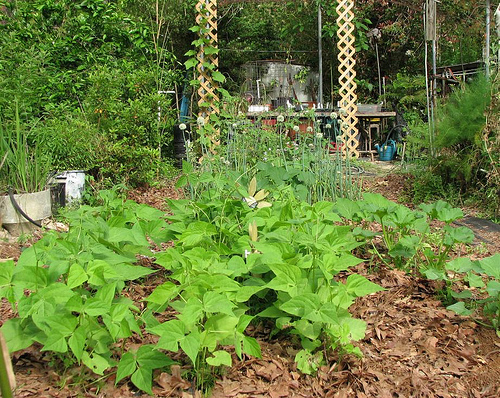
5. Use Natural Pest Control
Pest control is done by using the Producer, Prey and Predator cycle of life (a la Rabbit Hill). We must all learn to tolerate a certain amount of pests in the landscape and our gardens. In an organic, sustainable garden there are a few pests, but there is also an army of beneficial insects, spiders, reptiles and birds waiting to eat those pests.
Through the years, as people have tried to grow the maximum amount of food, most have come to view all insects as enemies and to depend on chemical fertilizers to encourage growth and poisons to kill pests. Most of these chemicals used do not discriminate and kill beneficial organisms too. This upsets the natural balance and when it rains, the chemical runoff poisons our ground water, rivers and even the Gulf of Mexico (there is a DEAD Zone there).
Using organic pest control techniques is a much better way to control pests and keep a healthy, natural balance in your garden. These methods can be as simple as planting companion plants, like parsley and fennel, that attract beneficial insects, introducing beneficial insects such as native ladybugs or native praying mantises to your garden, letting natural predators live in and around your garden and/or making your own pesticides from ingredients you may already have, such as soap, borax, ammonia and beer. And after all, one of the reasons that we grow our own fruits and vegetables (whenever possible) is because we want to eat foods that we are sure are safe and that are free of contaminants.
Some of the companion planting that we do includes:
- tucking French Marigolds in among the vegetables. Their flowers attract pollinators and the strong smell is said to repel nematodes.
- planting the herb, Savory, and beans together. They compliment each other, both in the cook pot and the garden.
- pairing up Basil and tomatoes, which are other beneficial companions in and out of the garden. We rarely have trouble with tomato horn worm when we plant basil among our tomatoes and we have many sphinx moths around.
- tucking members of the onion family in among our vegetables, which is another good way to control insects without using pesticides.
(reference: Recycle Works)
Spider on Sunflower
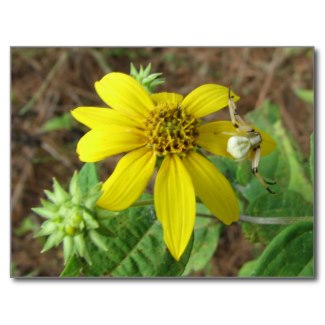
A Spider - Author Unknown
A spider spins
A web all day.
She has no time
To come and play.
She sits and waits
On a thread nearby
Until she traps
A delicious fly.
Controlling Slugs Organically Vid
Bumblebee on Balduina Postcard
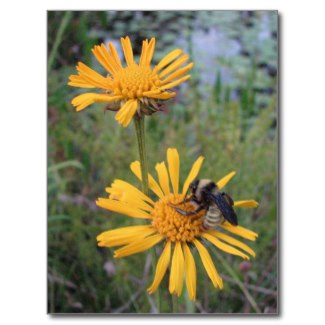
Bumbrie the Bumblebee by Harddirt Galaxy
The sun is shining now so bright
As each one hurries on his flight
With nothing else now on his mind
For each must now more nectar find.
Glorious flowers now appear
And to their summit he draws near
For he knows when such colors bloom
Within their centers treasures loom.
Never asking, as a layman
"Is this anther, or just stamen?"
He takes his fill of liquid sweet
From the blossom beneath his feet.
Without his help as he comes here
There'd be no flowers bloom next year
For those same feet on which he'll walk
Carry pollen from stalk to stalk.
So keep in mind, it's your duty
As you now view this awesome beauty
Look closely on this bumblebee
And beauty also there you'll see.
6. Recycle in the Garden
Another Green technique is to use recycled items in the garden. Items such as paint stirring sticks and old forks can be used to display vegetable seed packets. Plastic spoons and knives can be written on with a Sharpie to become plant identifiers. A broken clay pot can become a toad house. Clear plastic liter bottles can be used as mini-greenhouses for starting cuttings. Rigid, black plastic pots can be re-used, returned to nurseries or donated to a native plant organization or a sheltered workshop that sells plants.
The unmulched garden looks to me like some naked thing which for one reason or another would be better off with a few clothes on.
— Ruth Stout No-Work Garden Book, 1971Growing a Sustainable Garden Vid
Gardening Can Green Up the Desert Vid
The Children's Corner
Children can learn about the cycle of life in the garden. The never ending circle of producer, prey and predator is everywhere you turn. I've recommended some non-fiction books for children that are about some of the beneficial animals you will encounter in your own backyard. But the best way to learn is to observe the drama as it occurs. As Ms. Frizzle says, "Get out there and get dirty."
Brown Bat
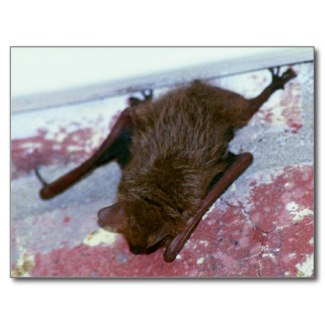
Those Bats - Author Unknown
They come in many colors,
Flying through the nighttime air.
They use sonar to guide their way,
Those bats are everywhere!
They eat so many little bugs,
The farmers love them so.
But when the daylight comes along,
Do you know where they go?
© 2008 Yvonne L B




